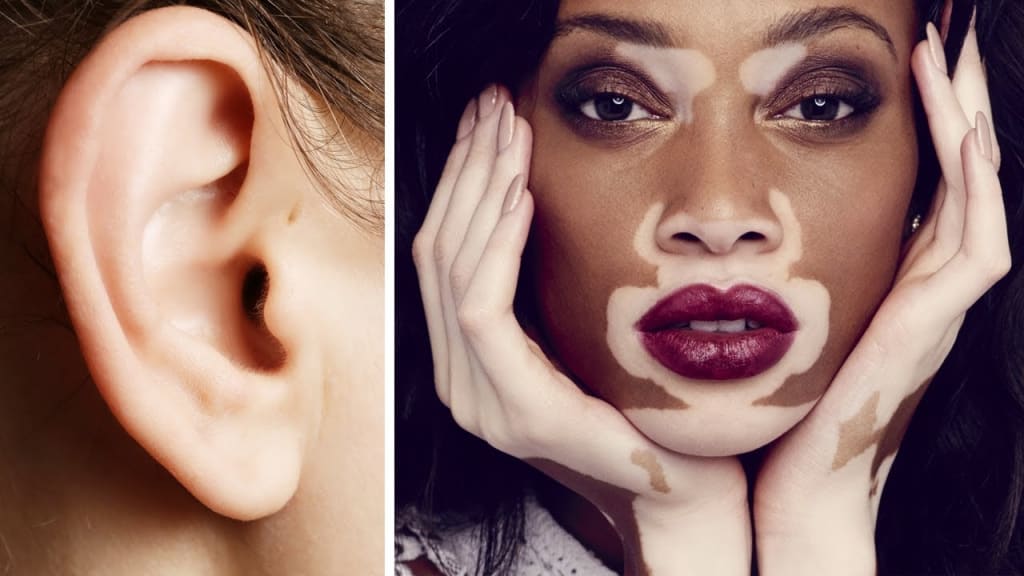10 Extremely Rare Human Body Features You Probably Don't Have
We’re all different, and a few of us even have rare features that occur in only a few percent of the population! These traits don’t show up often, but when they do, they certainly make their mark. Let’s explore some of these rare features that both bless and plague a small group of people!

10 Extremely Rare Human Body Features You Probably Don’t Have
We’re all different, and a few of us even have rare features that occur in only a few percent of the population! These traits don’t show up often, but when they do, they certainly make their mark. Let’s explore some of these rare features that both bless and plague a small group of people!
Number 1 - Hole Near The Ear If you look very closely to certain people’s ears, you’ll notice a very tiny hole next to their outer ear. That’s called a Preauricular Sinus, and it’s a leftover feature from a time when the ancestors of all living beings had gills. It’s genetically inherited and poses no threat to the individual. It’s completely useless today, though. So if you’re lucky enough to have this tiny hole, don’t try to breathe underwater with it. You’ll probably drown.
Number 2 - Patchy Skin Also known as Vitiligo, a dermatological condition characterized by the appearance of white patches of skin on different parts of the body. This condition is a result of the destruction of the pigment producing cells in the skin called melanocytes. This may vary from one or two white spots on the skin to large areas of depigmentation. The more dark skinned a person is, the more their condition stands out, because of the contrast between affected and unaffected areas of skin. For some people Vitiligo is progressive, but it’s not contagious, and it seems to occur more often among those who have certain autoimmune diseases.
Number 3 - Really Dense Bones Thanks to a genetic mutation of LRP5, the gene responsible for the mineralization of bones, some people are born with bones that are several times denser than average. In theory, people with the “unbreakable” bone mutation could walk away from a car accident unharmed! At first, the thought of unbreakable bones seems like a blessing, but the excessive bone growth can cause pressure on cranial nerves and the brain, and sometimes lead to hearing loss. On the bright side, doctors are trying to use the thick bone mutation to find a cure for osteoporosis and other diseases that cause brittle bones.
Number 4 - Double Lash Line This unusual body quirk is known as Distichiasis, a rare disorder defined as the abnormal growth of lashes. It’s the result of a transcription error on the 16th chromosome, and can also be a symptom of some pretty serious heart-related disorders. Nonetheless, out of all rare human body features and traits, a double lash line is a condition that most women probably wouldn’t mind having!
Number 5 - Golden Blood These people do not bleed shiny metallic stuff, but those who have the Rh-null blood type, have no antigens. Antigens help the immune system recognize pathogens, but they also prevent us from easily transfusing blood or receiving organ transplants. This blood type is so rare that only 43 people on Earth have ever been reported to have it, and there are only 9 active donors - so it’s only used in extreme situations. Because of its limited supply and enormous value as a potential lifesaver, some doctors have referred to Rh-null as Golden blood. However, those who have the Rh-null blood type undoubtedly have a bittersweet existence. They know that their blood is literally a lifesaver for others with rare blood, yet if they themselves need blood, their options are limited to the donations of only 9 people!
Number 6 - Additional Ribs Usually it’s women who have extra ribs. They’re located in the cervical spine area, and their sizes range from small to full-sized ribs. Cervical ribs are generally discovered incidentally, and in most cases, they are not clinically relevant and don’t have symptoms. However, they vary widely in shape and size, and in rare cases, they can cause problems such as contributing to thoracic outlet syndrome - because of pressure on the nerves caused by the rib.
Number 7 - Outie Belly Button Most people assume that the shape of their belly button is determined by how their doctor cut the umbilical cord. But, this isn’t really the case. Most outie belly buttons are actually caused by an umbilical hernia, where in essence, your inner parts push out your outer parts. Most of these hernias close on their own by the time a child turns 5, but in some cases, doctors may have to close it. Amongst the adult population, only around 4 % have an outie.
Number 8 - Super Vision Some people can distinguish shades of color much more than others. For example, a dandelion to us is yellow, but to them it’s a whole range of shades! Mutations in the X chromosome cause this rare condition called Tetrachromatism. While the average person sees around a million colors, Tetrachromatics actually have a fourth type of cone cell in their eyes, enabling them to see close to a hundred million colors!
Number 9 - Lobster Claw Hands or Feet People with Ectrodactyly, also known as a split-hand/split-foot malformation, have a cleft where the middle finger or toe should be. This causes their hands or feet to take on a claw-like appearance. It’s caused by several genetic factors, including deletions, translocations, and inversions of chromosome 7. Along with its strange physical appearance, this malformation is also often associated with hearing loss or hearing problems.
Number 10 - Different Colored Eyes The amount of melanin in the iris determines our eye color. Blue eyes have the least amount of melanin in the iris, and brown eyes have the most. But some people have two different colored eyes as the result of the relative excess or lack of melanin in their iris. The term used to describe this condition is Heterochromia. Although a distinction is frequently made between Heterochromia that affects an eye completely or only partially, it is often classified as either genetic or acquired. Sometimes one eye may change color following disease or injury. Do you have any unique physical characteristics or rare genetic traits? Let us know in the comments below!






Comments
There are no comments for this story
Be the first to respond and start the conversation.